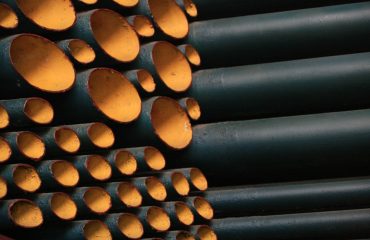body { font-family: sans-serif; line-height: 1.6; }
h1, h2, h3 { color: #333; }
img { max-width: 100%; height: auto; }
Equal angle bars, also known as equal leg angles, are ubiquitous in construction, manufacturing, and various other industries. These versatile structural components, characterized by their L-shape with two legs of equal length, offer a unique combination of strength, rigidity, and ease of fabrication. This comprehensive guide delves into the world of equal angle bars, exploring their properties, applications, and the factors to consider when selecting them for your projects.
Understanding the Properties of Equal Angle Bars
The defining characteristic of an equal angle bar is its two legs of identical length, forming a right angle. This symmetrical design contributes significantly to its structural capabilities. They are typically manufactured from various materials, including mild steel, stainless steel, and aluminum, each offering distinct properties. Mild steel is the most common choice due to its excellent strength-to-weight ratio and cost-effectiveness. Stainless steel provides superior corrosion resistance, making it ideal for outdoor or marine applications. Aluminum offers lightweight strength, beneficial in situations where weight reduction is crucial.
The dimensions of equal angle bars are standardized, typically expressed in terms of leg length and thickness. These dimensions are critical for structural calculations and ensuring compatibility with other components. The choice of material and dimensions significantly impacts the overall strength, stiffness, and weight of the bar. Understanding these properties is crucial for proper selection and application.
Manufacturing Processes of Equal Angle Bars
Equal angle bars are primarily manufactured through hot-rolling processes. This involves heating the raw material (typically steel billets) to a high temperature, then passing it through a series of rollers to shape it into the desired L-shape. The hot-rolling process allows for efficient mass production and imparts superior mechanical properties to the finished product. After hot-rolling, the bars may undergo further processing, such as cutting to length, surface treatment (e.g., galvanizing for corrosion protection), or heat treatment to enhance specific properties.
Precision is paramount in the manufacturing process to ensure dimensional accuracy and consistency. Strict quality control measures are implemented throughout the production chain to guarantee that the finished equal angle bars meet the required specifications and standards. This attention to detail is crucial for ensuring the structural integrity of any application utilizing these components.
Diverse Applications of Equal Angle Bars Across Industries
The versatility of equal angle bars makes them indispensable across a wide range of industries. In construction, they are extensively used as structural supports in buildings, bridges, and other infrastructure projects. Their ability to withstand significant loads and their ease of welding and bolting make them ideal for creating robust frameworks. They are frequently used in creating support structures for roofs, walls, and floors.
In the manufacturing sector, equal angle bars find applications in creating machinery frames, jigs, fixtures, and other industrial components. Their strength and rigidity ensure the stability and accuracy of these components. They also serve as excellent bracing elements, improving the overall stability and durability of manufactured goods.
Furthermore, equal angle bars are used in various other applications, including: automotive parts, furniture manufacturing, agricultural equipment, and even artistic creations. Their adaptability and availability contribute to their widespread use.
Advantages of Using Equal Angle Bars in Construction and Manufacturing
The popularity of equal angle bars stems from several key advantages: Firstly, they offer excellent strength and rigidity relative to their weight, making them cost-effective structural solutions. Secondly, their L-shape allows for easy connection to other structural elements through welding, bolting, or riveting. This simplifies the fabrication process and reduces assembly time.
Thirdly, equal angle bars are readily available in various sizes and materials, allowing for flexibility in design and application. This wide selection ensures that engineers can choose the most suitable option for specific project requirements. Fourthly, their relatively low cost compared to other structural shapes makes them an economically viable choice for many applications.
Selecting the Right Equal Angle Bar: Key Considerations
Choosing the appropriate equal angle bar requires careful consideration of several factors. The material selection depends on the application’s environmental conditions and required properties. Mild steel is suitable for most indoor applications, while stainless steel or aluminum are preferred for corrosive environments or weight-sensitive designs.
The dimensions of the angle bar are crucial for ensuring sufficient strength and stiffness. These dimensions are determined based on the anticipated loads and stresses the bar will experience. Proper engineering calculations are essential to avoid structural failure. Furthermore, surface treatment, such as galvanizing or painting, should be considered to protect the bar from corrosion and enhance its lifespan, especially in outdoor or harsh environments. Finally, adhering to relevant industry standards and building codes is essential to ensure safety and compliance.
Equal angle bars are fundamental structural components with a wide range of applications. Understanding their properties, manufacturing processes, and selection criteria is crucial for engineers, designers, and anyone involved in projects utilizing these versatile materials.
SEO-Friendly Tags:
Equal Angle Bars, Equal Leg Angles, Steel Angle Bars, Structural Steel Angles, Metal Angle Bars




